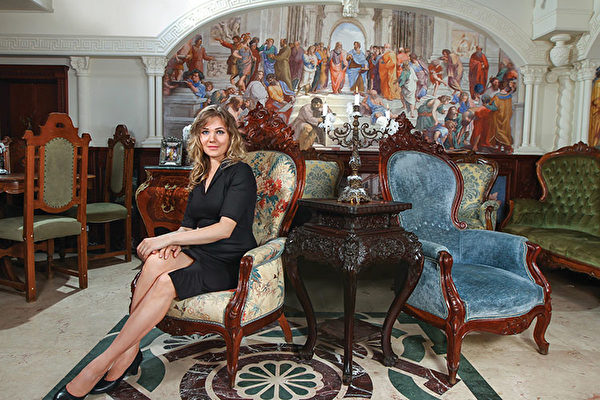Inner Harmony
WRITER TARA DOS SANTOS, MAGNIFISSANCE
PHOTOS COURTESY OF OLENA BALAKINA
She began studying art as a teenager in the 1990s, driven by fate, she says. And shortly thereafter, she found her spiritual path, a meditation practice called Falun Dafa, originating in China. Her spiritual growth and her growth as an artist have been intertwined ever since.
Interior designer Olena Balakina transforms homes in Kyiv, Ukraine, guided by her training in classical art and by profound principles of Asian spirituality.
Her successes include the design of a large arts-and-culture centre in Kyiv, called San Pietro, which she imbued with all the sublime beauty of the Renaissance. She sourced much of the décor from Italy and shaped the space opulently with rich wood, marble, and intricate crown moulding.
The scenes painted on its walls and ceilings recall the grandeur of the Sistine Chapel, a place that greatly inspired her to become an artist in her youth. She is now a key advisor at the centre, helping shape the city’s artistic landscape.
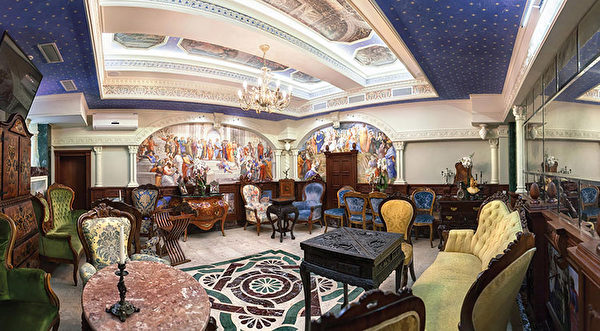
At the core of her aesthetic philosophy is the idea that a designer’s state of mind and heart clearly impacts his or her designs — a beautiful heart creates a beautiful space.
“The external is influenced by the internal,” she says. “What are your thoughts? It’s important to work on your inner world, to keep your mind clear and have more good thoughts.” For example, she says, “You need to create an interior space with love for the people who will live in it, then your work will naturally be well-thought-out, functional, and comfortable.”
She began studying art as a teenager in the 1990s, driven by fate, she says. And shortly thereafter, she found her spiritual path, a meditation practice called Falun Dafa, originating in China. Her spiritual growth and her growth as an artist have been intertwined ever since.
A Reluctant Protégé
Though Balakina’s mother tried to foster in her a love of art from a young age, Balakina wasn’t interested and was even adverse to it. When her mother offered her a choice between dance classes and art classes, she picked dance without a moment’s hesitation.
But when she was 13, they moved into an apartment building that had an art school on the first floor. “Then I understood that maybe it’s a sign I should study art, and I went there and started studying,” she says.
The school held a children’s competition, and Balakina decided to apply herself wholeheartedly to a drawing for it. She spent two months drawing an intricate jungle scene with ball-point pen. She carefully formed every leaf, every minute detail.
After she had made her submission, a teacher at the school told her, “Please don’t be disappointed, but they can’t believe that this work was done by a young girl.” The judges wouldn’t accept it for the competition, because it was so far out of the league of children’s art. “The other submissions were drawings of kittens and such,” says Balakina. “That was the first artistic expression of mine where I saw victory,” she says.
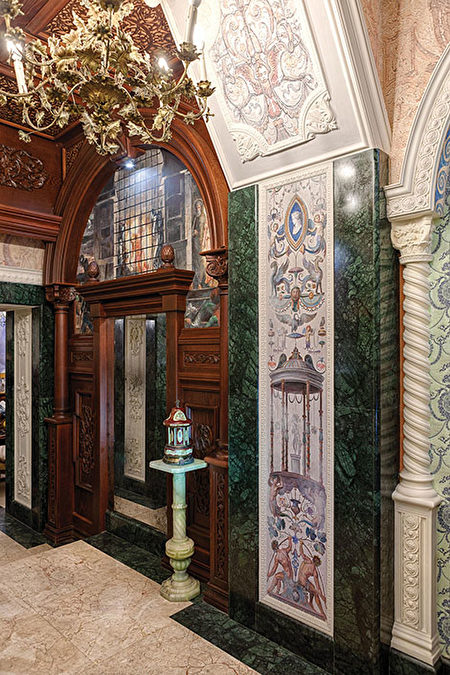
She didn’t study very long at the school in her building, but when she was 16, she found an artist with a studio in the city to mentor her. She wanted to apply to the National Academy of Visual Arts and Architecture, and she felt she needed a lot of help to catch up. Most students who apply to the Academy have had years of formal training, and even then, it often takes multiple tries to get in.
Balakina had almost no training, but she applied herself diligently. She would go to her mentor’s art studio after doing her homework for school and stay there late into the night. The mentor gave her a set of keys to lock up. Her determination paid off, and after six months of study and practice, she was one of the youngest people admitted to the Academy.
During her first year at the Academy, she met an art student who stood apart from the rest. She saw that this student, named Vita, would share her art supplies freely, unlike the other students. Vita would always help others, give up the best seat in the class, and generally seemed kindhearted and at peace.
Balakina befriended Vita (they remain friends to this day), and found that the secret to Vita’s tranquility and selflessness was the practice of Falun Dafa. The three main principles of Falun Dafa are truthfulness, compassion, and forbearance. It teaches people to be considerate of others, to clear the mind, and to always improve oneself. It also includes meditation, which can help one become tranquil.
A Lesson in Love and Beauty
“To be an artist, you have to have a lot of determination and patience in everything,” Balakina says. When she started practicing Falun Dafa, Balakina found she was able to focus better on improving her skills. Before, it was hard for her to sit still for an hour. “Inside me, there was no calm,” she says.
She started helping others in any little way she could. She would talk with the women who posed as nudes for her classes, listening wholeheartedly as they shared with her whatever challenges they were facing in life. Balakina even helped one of them tend to her sick husband and clean her house. “If I heard a story like that before I had started practicing Falun Dafa, I wouldn’t have even paid any attention,” she says. “I guess you can say that I don’t remember myself before the practice.”
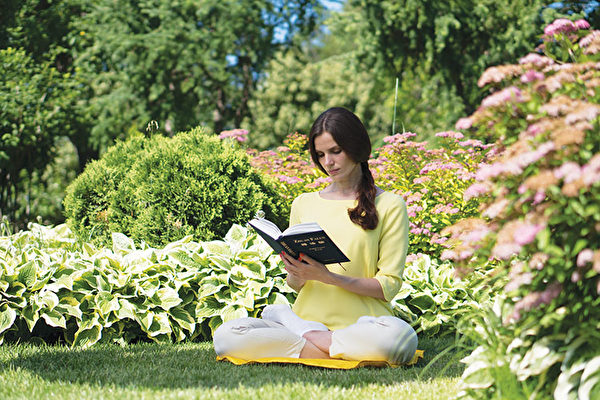
The little things in life became more beautiful to her. “I used to just walk through life with a heavy load, heavy thoughts. After the practice, the world opened up for me,” she says. “[I started noticing] how the buds were forming on the trees, how the leaves fall, these kinds of moments.”
Now, after having practiced Falun Dafa for nearly 20 years, she has seen its beautifying effect in many facets of her life and career.
When she graduated from the Academy after six years of study, she started out working as a designer for film sets. This work inspired her to transition into interior design.
It’s been important for Balakina to develop good relationships with clients so she can really create homes they will love. She is always reminded through her study of Falun Dafa to think of her clients first, of the home that will truly make them happiest. It comes from deep in her heart.
“I always tell clients right away about Falun Dafa; that’s like my business card,” she says. “[When I explain] my values in life and in work, that really opens a person up. My client then understands who he or she is dealing with. They understand that I won’t cheat them or let them down.”
Balakina has also been able to better handle creative problem-solving in her work. Falun Dafa has taught her to take a step back when she encounters a problem and look at it from a broad perspective, she says.
“Creativity is like water. Meeting a stone on the way, water flows around it, creating an even richer landscape,” she says.
Harmony and Balance Create a Place ‘Where you Feel Light’
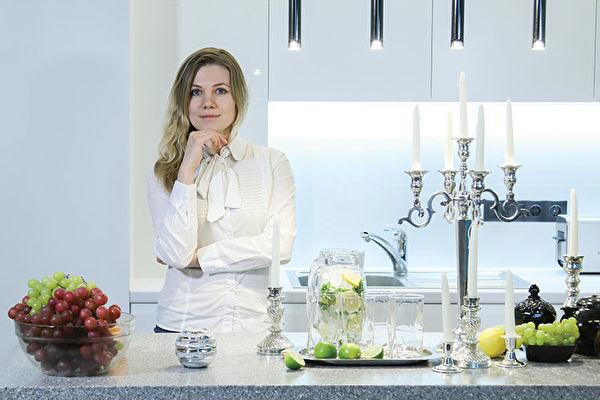
A classical aesthetic has always appealed to Balakina. The Academy focused a lot on classical art and techniques; students would practice drawing busts of Greek gods to perfect their skills, for example. Modern art instruction was available, but not part of the core studies.
Balakina’s love of this aesthetic was greatly deepened when she visited Rome with her mother during her third year at the Academy. She was inspired to study art in Italy, but when she visited an art school there and saw the kind of work lining its halls, she gave up that aspiration.
“It was all contemporary, modern styles, broken figures, forms without harmony,” she says. “I wouldn’t be able to handle it there even a month.”
Though she got to fully indulge her classical style in designing the San Pietro arts centre in Kyiv, she says the design for a person’s home space should be more simple. “It has to be harmonious, cozy, and functional, but it has to be simple and breathable, a place where you feel light.”
One of the most memorable homes she has worked on was special because of the connection between her and its inhabitants. Balakina was seven months pregnant when she first met the client looking to decorate her Kyiv apartment. This woman told Balakina she would wait for as long as Balakina needed.


“She felt that there is a connection between us on the emotional and spiritual level,” says Balakina, which made the client determined to have Balakina, and no other, as her designer. For years now, Balakina has continued to do periodical work for this woman and her friends.
“For me, her words were very important,” Balakina says. “Then I realized that it’s important to always open your heart to people. After all, work is not the main thing in life. The main thing is that these are the people to whom you are introduced by fate.”
Source: https://magnifissance.com/selfcare/spirit-and-mind/inner-harmony/
Editor’s Note: Dear readers, do you know that Falun Dafa, originally from China, is currently practiced by people in over 100 countries? But in China, since Jul. 20, 1999, Falun Gong is defamed, slandered and persecuted due to the Chinese Communist Party’s fear of Falun Gong’s rapidly growing popularity. Jiang Zemin, former head of the Chinese Communist Party (CCP), perceived the spiritual discipline’s growing popularity as a threat to the CCP’s atheistic ideology.
To learn more about the persecution Falun Gong practitioners are subjected to in China, visit http://faluninfo.net/.
For more information about the practice or to download Zhuan Falun, visit: www.falundafa.org. All books, exercise music, resources, and instructions are available completely free of charge.

